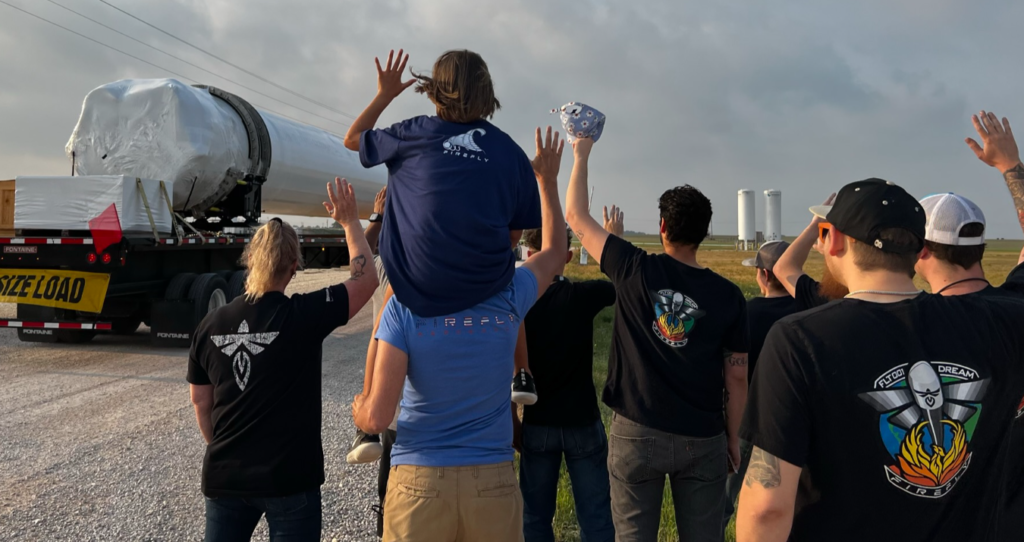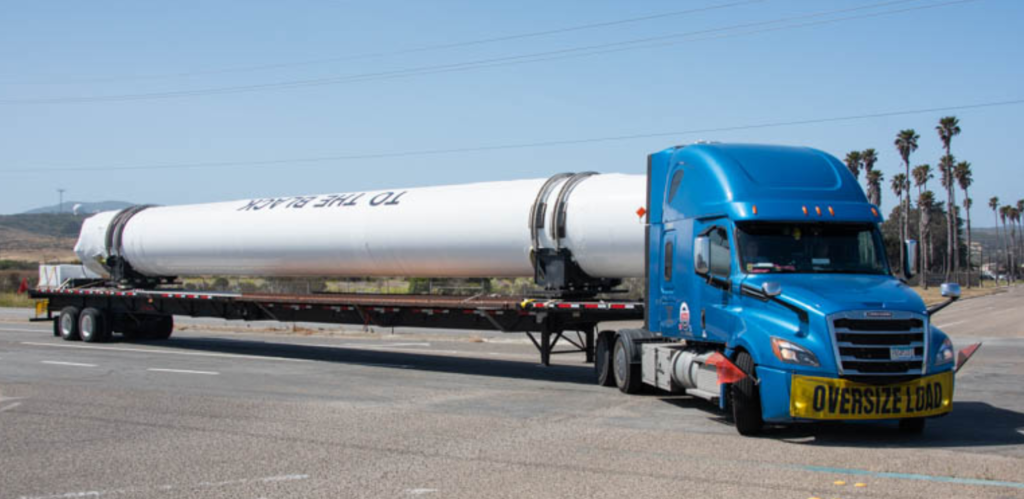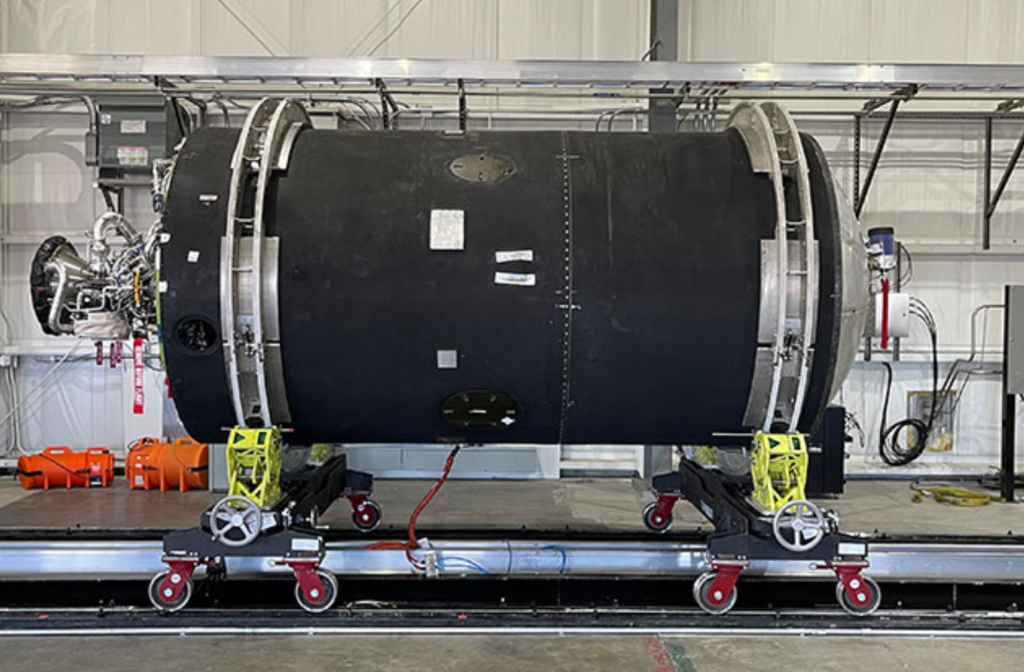
Firefly Aerospace Is Making Impressive Progress Towards Its Second Orbital Test Flight
As of right now, an immense amount of work is being done throughout the entire space industry all working towards unique but similar goals. This includes orbital test flights, missions to the Moon, and much more. Firefly Aerospace is one of these companies and has been staying very busy over the past few months in preparation for its second orbital test flight of Alpha.
Alpha is Firefly Aerospace’s small-lift launch vehicle meant to provide an affordable option to reach space for different customers. Not very long ago, Firefly attempted the first orbital test with Alpha, while it was not 100 percent successful, the company used it to grow and are working to apply the information gained on this upcoming second attempt.
In recent months and weeks especially, Firefly Aerospace has been making some finishing touches on Alpha and the launch pad. All of which is meant to see the company successfully reach orbit for the first time on their second attempt. This is by no means an easy task, but Firefly is very capable. Here I will go more in-depth into the recent updates, and when we should expect to see Alpha launch once again.
Recent Updates

As Firefly Aerospace gets closer to its long awaited second orbital test flight, the different jobs and preparations continue to present themselves. A rocket launch is an immensely complex process, not to mention the difficulty of reaching orbit for the first time. This being said, Firefly is confident in the upcoming attempt and currently working hard to reach this milestone. Over the past few weeks they have continued to provide various updates on the launch and what to expect in the future. One of the first substantial updates they provided had to do with testing of Alpha’s stages. They tweeted saying, “The Firefly team is laser-focused on reaching orbit this year. With the successful stage 2 hotfire today, both stages of our flight 2 Alpha vehicle have now completed acceptance testing and are ready for flight. See you on the pad.” This tweet was a few months ago, which puts in perspective how close the company really is by now.
Next, just a few months later Firefly tweeted another update mentioning, “Flight 2 is getting ready to head to our launch pad at Vandenberg Space Force Base. Get a behind-the-scenes look into our journey so far.” This included a short video where CEO Tom Markusic narrated some of the progress the company had made in recent months. This included the fact that they were getting very close to the first launch and different aspects of the preparation, such as stage testing, was done much faster than the first launch. All of which are important factors as the team at Firefly Aerospace continues to grow in many different ways. This brings us to today where in the last week alone Firefly has given a few promising updates on the second launch. The first was a tweet on May 21st that said, “We are hyperfocused on achieving orbit. Alpha flight 2 is going #ToTheBlack. Follow us as we continue our journey.” Finally, only a few days ago on May 24th, Firefly tweeted again this time saying, “Goodbye Briggs, TX; hello Vandenberg, CA. Launch preparations for Flight 2 #ToTheBlack have begun with both stages shipped from our test and manufacturing facilities to our launch site @SLDelta30.” This is referring to the transportation to Vandenberg Space Force Base. Specifically, Firefly conducts Polar and SSO launches to high inclinations from SLC-2 at Vandenberg Space Force Base, California. This site can support launch azimuths from 140 degrees to 260 degrees and was the location of Firefly’s first attempt. These recent updates are a very good sign of the progress the company has been making and when we can expect to see another Alpha launch. Based on the current progress of Alpha, it is very possible we see the small-lift launch vehicle take flight once again in only a few months, if not, by the end of 2022.
Alpha & Its Launch

Now that we know more about exactly what Firefly has been working on and the progress of Alpha, we can take a closer look at the launch vehicle itself, and some of the changes made to improve on the first attempt. Back in late 2021, Firefly had its first orbital test flight of Alpha. The test began with a nominal countdown and lift off at 6:59 PM PDT and achieved a successful first stage ignition, liftoff from the pad, and progression to supersonic speed. During the flight, the launch vehicle experienced an anomaly that resulted in a safe termination of flight by the Range using the Flight Termination System (FTS). An initial review of flight data indicated that an electrical issue caused the shutdown of one of the four first stage Reaver engines. More specifically, about 15 seconds into the flight, engine 2 (there are four Reaver engines on the first stage) shut down. It was an uneventful shutdown – the engine didn’t fail — the propellant main valves on the engine simply closed and thrust terminated from engine 2. The vehicle continued to climb and maintain control for a total of about 145 seconds, whereas the nominal first stage burn duration is about 165 seconds. However, due to missing the thrust of 1 of 4 engines the climb rate was slow, and the vehicle was challenged to maintain control without the thrust vectoring of engine 2. Alpha was able to compensate at subsonic speeds, but as it moved through transonic and into supersonic flight, where control is most challenging, the three engine thrust vector control was insufficient and the vehicle tumbled out of control. The range terminated the flight using the explosive Flight Termination System (FTS). The rocket did not explode on its own. This helps give an idea of what went wrong on the first flight and the improvement Firefly has made over the past few months. Not only was the first launch partially successful in many ways, but it seemed as if a lot of the complications were easy fixes in comparison to other possible problems.
The purpose of Alpha is to try and offer the highest payload capacity for the lowest cost per kilogram in its vehicle class. Firefly describes Alpha as the world’s most advanced 1,000 kg small satellite launch vehicle. Using tried and true, flight-proven rocket technologies, Alpha is 100% manufactured in the USA and designed to be the most reliable small satellite launcher available. Alpha’s pump-fed, regeneratively-cooled engines use standard LOx/RP, and its avionics systems, such as the flight computer and communication system, employ COTS components with established flight heritage. Modern advances in carbon composite materials are used to create strong, lightweight primary structures such as propellant tanks. Entirely manufactured and launched in the USA, helping keep costs to a minimum while achieving unprecedented dependability. In addition, Firefly is confident that its dedicated launch facilities on the west and east coast of the US, at Vandenberg Space Force Base Space Launch Complex 2 and Cape Canaveral Space Force Station Space Launch Complex 20, will enable flights as frequent as once per month by late 2022. Firefly launch sites provide customers with a wide range of orbit options to fit mission objectives. Each facility supports both dedicated and multiple manifest missions.
Taking a look back at Alpha, the rocket utilizes well-established propulsion technology. Both stages use common designs: copper regen-cooled LOx/RP-1 thrust chambers, a simple tap-off cycle that drives single shaft turbopumps, nozzle-mounted turbine exhaust manifolds, and hydraulic actuators. Innovations in Firefly engines include their simple “Crossfire” injector, tap-off geometry, dual-mounted electrically actuated, trimmable propellant main valves, and ultra-compact horizontal turbopump mounting. The upper stage engine, “Lightning,” includes a turbine-exhaust cooled refractory metal high area ratio nozzle extension. The first stage “Reaver” engines feature simple single axis gimballing. Consistent with the overall Alpha vehicle design, cost and performance are traded and optimized in Lightning and Reaver components to provide the best payload performance value. Firefly also utilizes advanced carbon-fiber composites for the entire airframe of Alpha, including the state-of-the-art, linerless, cryogenic propellant tanks. Composite materials are ideally suited to launch vehicle structures due to their high strength, low density, and tailorable material properties. This allows Firefly Alpha to lift heavier payloads than a similar metal rocket. All of which combine into a new rocket trying to establish itself in the ever growing space industry.
Conclusion
Many different companies throughout the space industry are working on new and ambitious projects of the future. This includes a lot of firsts and never before tried features, structures, manufacturing processes, and much more. Firefly Aerospace is a good example as they work to reach orbit for the first time ever. In late 2021 the company had its first attempt. Since then, they have been continuing to work towards the second flight providing updates along the way. We will have to wait and see how it progresses and the impact it has on the space industry.
